
Who is worthy of respect? The one who respects his neighbour « For them that honour Me I will honour, and they that despise Me shall be lightly esteemed»
(Samuel 2 :30) Pirke Abot 4.1
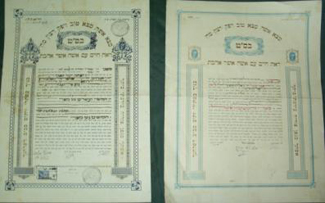
Whether married in Egypt or elsewhere, some families preferred to entrust their marriage contracts with the community for safe keeping from loss or destruction. Hence one finds in Alexandria, alongside local Ketubboth, some that were drawn up in other countries. Each country followed different artistic traditions varying even from one city or community to another. As of 1890, Alexandria developed an exclusive style that evolved graphically over time.
This was not the case for Cairo. You can admire some Egyptian Ketubboth on the following web site: JNUL Links / Geneanalogy . Unfortunately, their collection value has encouraged an illicit trade.
Only recently, a lot of Ketubbot whisked away from the community and exported for profit was up for sale and our association was approached to that effect. We did not pursue this approach so as not to encourage this type of trade. Examples of Alexandria’s graphic art, from this particular lot, are shown here. They are now probably in the hands of some « Judaïca » collector.
Should our memory be treated in this way ? How long before it evaporates completely?
It would seem preferable to protect these documents rather than encourage their trade.
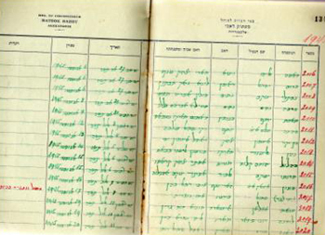
Circumcision registers are based on Mohel books as well as parents’ declarations. These books, such as the one of Mohel Maatouk Dabby, from which two extracts have been reproduced here, hold a historical and artistic value for the community.
Maatouk (appropriately named) was of Iraqi origin. He officially practiced in Alexandria between 6/08/1929 and 6/02/1951.
He applied his skill on 3100 Jewish males, on average 142 “Brit Mila” per year. He emigrated in the beginning of the 50’s.
Other such books from different Mohels exist in Alexandria, retracing the birth of many generations.
What danger do these catalogues of foreskins represent for the authorities measured against their importance and interest for the history of our families!
There are 3 libraries in Cairo (of which one is in Fostat) containing all the remaining books. This lot is well indexed and protected from the weather This is not the case in Alexandria where documents are exposed to the prevailing saline and humid climate; the attached photo shows the precarious storage conditions.
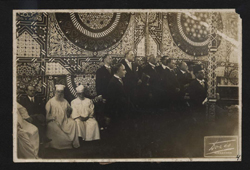
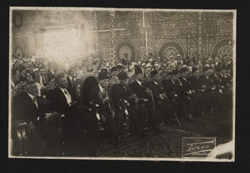
An inventory of all remaining books would be useful, if available to all. Some of these books can now be found in foreign repositories (such as the Neve Shalom book below, at A.I.U.). Some archives are also easily available e.g. from the Sefardi and Ashkenazi Communities of Cairo 1936-1947 (at the New York Yeshiva University) or the first draft of the Statutes of the Alexandria Community (at the “C.A.H.J.P.” in Jerusalem). However all the community archives (for schools, community councils, councils of charity organizations, Beth-Din archives) remain in Egypt inaccessible and untapped.
Not one Purim Meguila is left in Alexandria; Children used to unroll them proudly at Purim and each synagogue had at least one.
A large number of photos such as this one exist in Alexandria. They would allow us all to bring back to life the events and personalities of that community.
At the very least, a complete central inventory of what remains in Egypt should be established. This should be made available to all interested parties to facilitate research and stimulate the curiosity and interest of individuals for what is already protected and what should be preserved. 19 cartons of books, taleths and tefillins are already been ritually buried in the Alexandria cemetery.
It is preferable to use and protect these documents rather than wait for their total and unavoidable disintegration.
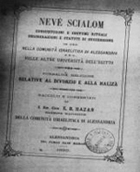 |
 |
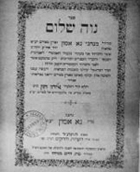 |